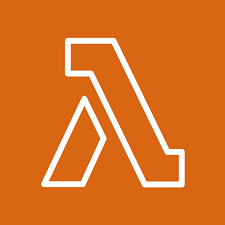


AWS Lambda is an event-driven serverless computing platform, which executes code in response to events while handling the back-end administration and infrastructure required to run code.
In this article, we explore AWS Lambda and its functioning, concepts, benefits, and use cases.
Serverless computing is a means of delivering back-end services on demand. Serverless providers let users write and deploy code without those users taking responsibility for the underlying infrastructure.
Management and operations tasks for back-end cloud infrastructure are the responsibility of the cloud provider. These include scaling, provisioning, patching, and scheduling.
Read more: What Is Serverless Architecture?
AWS Lambda is a compute service that allows you to run code in the absence of provisioning or managing servers. Through compute infrastructure characterized by high availability, Lambda runs code and carries out the administration of compute resources.
Lambda handles automatic scaling, maintenance of servers and operating systems, capacity provisioning, and code monitoring and logging.
How does it work? You provide your code in a language supported by Lambda. Lambda runs your function after you group your code into Lambda functions. It only runs code when required to, and scales automatically.
Users are only billed for the compute time they use. Lambda functions can be called through the Lambda API. They can also be executed as a response to events from other AWS services.
AWS Lambda has numerous terms you need to know to use the service. They include:
Read more: Serverless Architecture: What Are the Benefits and Challenges?
AWS Lambda runs event-triggered code in parallel, individually processing each trigger and accurately scaling with the size of the workload. Scaling can be from a few requests daily to hundreds of thousands of requests per second.
Lambda eliminates a user’s server responsibilities. It executes code on infrastructure that is fault-tolerant, highly available, and covers many Availability Zones in an AWS Region.
AWS Lambda handles maintenance, administration, and patches of the infrastructure while offering built-in logging and monitoring.
Lambda integrates with many AWS services to provide developers with a valuable ecosystem to build serverless applications.
Through AWS Serverless Application Model (SAM), developers can build serverless applications and integrate with IDEs like AWS Toolkit for Visual Studio, AWS Cloud9, PyCharm, IntelliJ, and more. AWS Serverless Application Repository enables developers to discover, deploy and publish serverless applications.
With Lambda, users can infuse artificial intelligence into their applications by using functions with pre-trained machine learning models. One API request can carry out video analysis, image classification, speech to text, and natural language processing, among others.
Lambda empowers the programming resources of an organization to focus on innovating and developing business logic since Lambda assumes responsibility for infrastructure management. Freeing up such resources also leads to improved productivity.
Read more: What Is Amazon S3? Amazon Simple Storage Service
Lambda is particularly useful for hosting the back-end logic of a website you are creating, as you can call on your Lambda function over HTTP via the Amazon API Gateway. The API Gateway can forward the request to Lambda after your web client invokes the API.
When your application has to handle massive streaming input data volumes, it may be inefficient to move the data to temporary storage to be processed later.
Depending on your use case, sending a real-time data stream to an AWS Lambda application can ensure that you have a handle on key real-time tasks without introducing latency into your overall application.
With Lambda, users can create Lambda functions to examine log files from Amazon Cloudwatch or Cloudtrail. Lambda can check the logs for particular log entries and events as they happen, and then use Amazon Simple Notification Service (SNS) to send notifications.
Users can also call the API endpoints of other systems such as Slack and Zendesk to easily implement custom notification hooks.
Your application or website code does not need to deal with the details of requests and responses when you need to request services from an external provider, as this is one of the causes of latency in web-based services.
Sending requests to an application running on Lambda does not cause your main application to cease functioning while waiting for a response from the Lambda function, thus hiding slow responses from end-users.
You can use Lambda when creating analytics applications and using DynamoDB tables to store raw data. When you modify the items in the DynamoDB tables, you can use DynamoDB streams to publish item update events to streams related to the tables.
Custom metrics can be generated by aggregating raw data through writing Lambda functions.


Collins Ayuya is a contributing writer for ServerWatch with over seven years of industry and writing experience. He is currently pursuing his Masters in Computer Science, carrying out academic research in Natural Language Processing. He is a startup founder and writes about startups, innovation, new technology, and developing new products. His work also regularly appears in TechRepublic, Enterprise Networking Planet, Channel Insider, and Section.io. In his downtime, Collins enjoys doing pencil and graphite art and is also a sportsman and gamer.
Property of TechnologyAdvice. © 2025 TechnologyAdvice. All Rights Reserved
Advertiser Disclosure: Some of the products that appear on this site are from companies from which TechnologyAdvice receives compensation. This compensation may impact how and where products appear on this site including, for example, the order in which they appear. TechnologyAdvice does not include all companies or all types of products available in the marketplace.